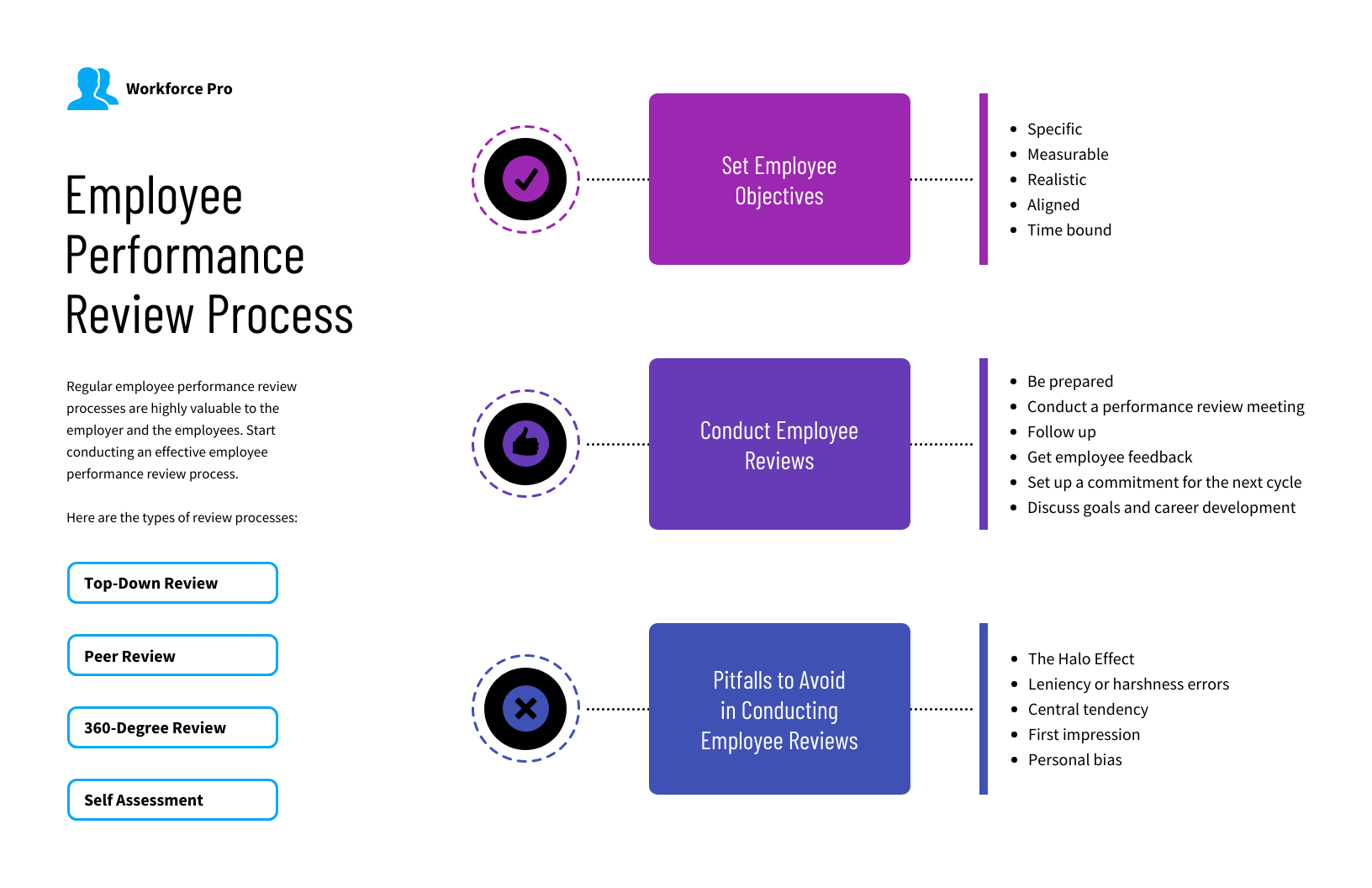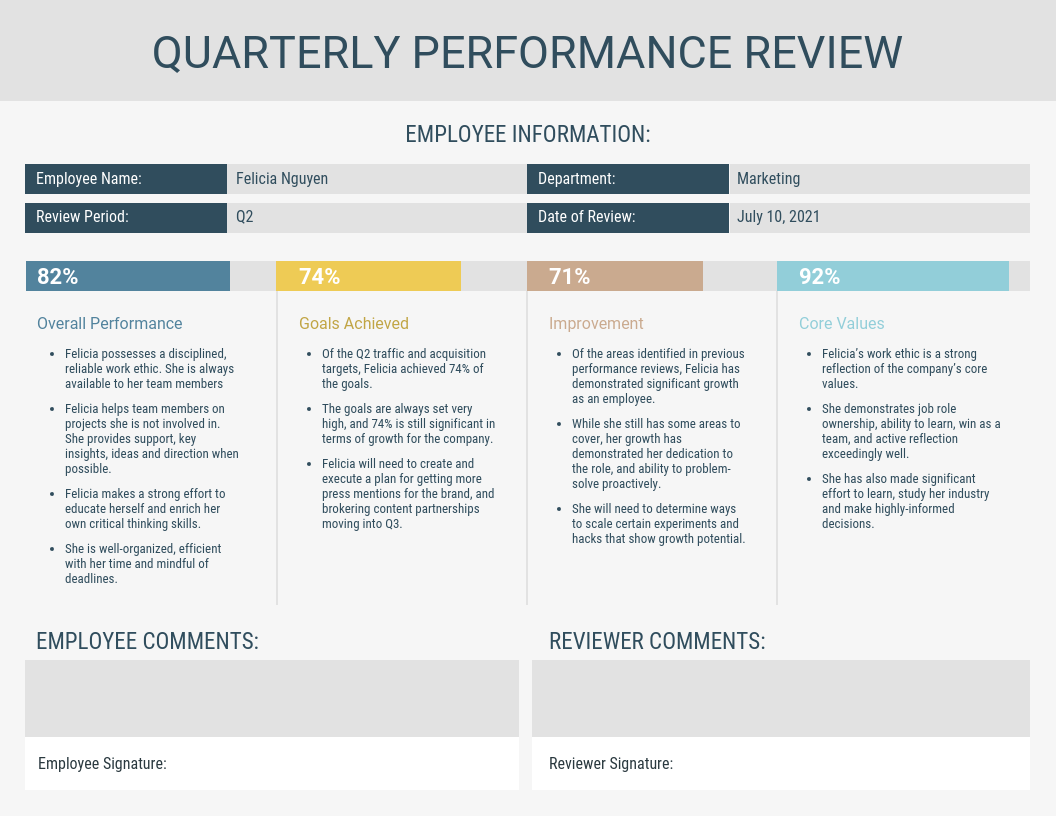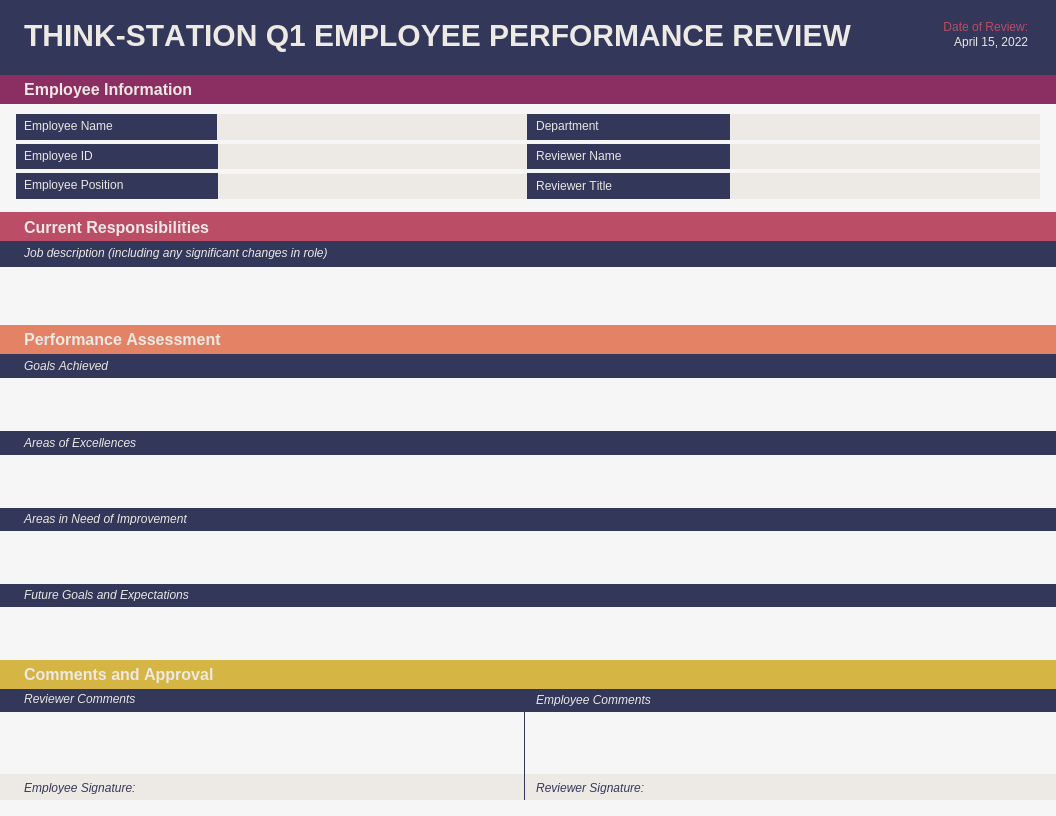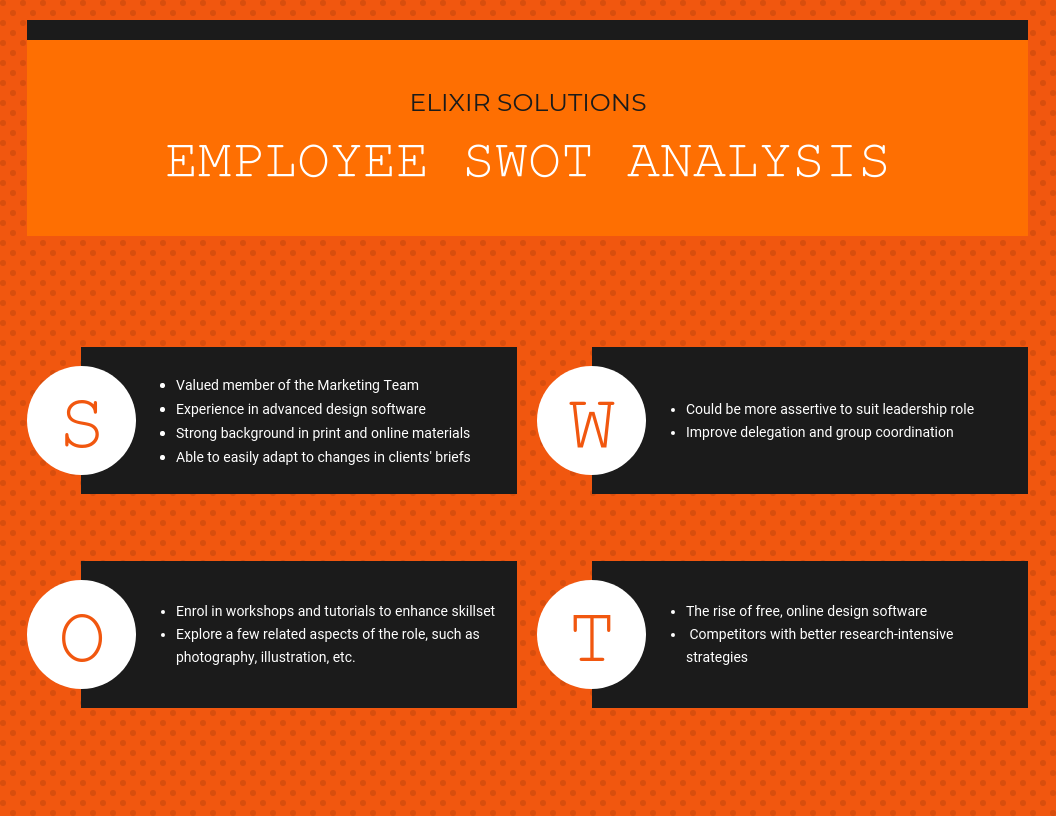What is the best way to evaluate remote employees? Is an online performance review the answer?
We don’t have to tell you: Due to the COVID-19 pandemic, workplace dynamics have changed drastically over the last few months. From minimal personal interaction and connection to increased reliance on collaboration tools and communication technology — the word “office” as we know it has taken a whole new meaning.
This leaves many companies, as the year-end approaches, to wonder where this leaves performance reviews. Given the absence of in-person interactions: How do you evaluate your remote employees accurately, deliver clear feedback, and maintain trust?
Here are our thoughts…
Before you start the process, devise an employee review strategy and share it with the team. This brings consistency and improves the quality of performance review discussions. Here’s a mind map that demonstrates the importance of the employee performance review process:

Now, let’s take a look at how you can conduct productive online performance reviews and drive professional growth in the process.
Create an Employee Review Template
If you think you can enter an online performance review meeting and just “evaluate” your team members on the spot, you’re mistaken. Performance review season calls for preparation from both the reviewer and the reviewee.
The first step of the preparation process is to create an employee review template. This is an effective way to document and track employee performance. It also helps you conduct a focussed review and create a level playing field for all involved.
Where possible, make it a point to share the template with your team members during their onboarding process, letting them know how they will be evaluated.
This quarterly performance review example has a section for achievements and areas of improvement; customize to add metrics of value to your company:

Having an employee review template in place lets you be better prepared for the meeting. You can collect performance data and make your notes based on the key performance indicators you’re measuring, paving the way for a more structured discussion.
Encourage Self-assessment
Self-assessments are a good way to get employees to reflect on their goals, responsibilities, overall performance, strengths and weaknesses.
According to a CIO article, companies with effective performance review processes use self-evaluations for two reasons:
- To ensure employees set aside time to evaluate their performance
- To help managers get a sense of whether an employee has an accurate understanding of their impact in the workplace
Encouraging employees to evaluate their performance ahead of a performance review meeting keeps them more engaged in the process while letting managers get an insight into their perspective.
This self-performance review template requires the employee to write their job description, goals achieved, areas of excellence and improvement — which helps the interviewer assess their impact on the organization while getting their side of the story.

Use a Video Conferencing Tool
Performance review discussions can be tricky at any time. The remote working environment certainly doesn’t help the situation.
While you can’t rely on body language and facial expressions the way you could in a traditional set-up, conducting online performance reviews over video conferencing will help you create a more personal experience and facilitate transparent communication.
Before the discussion begins, establish video conferencing etiquette guidelines and share them with your team to run an effective virtual meeting.
Provide Clear and Explicit Feedback
Online or not, managers are expected to be specific with their performance review feedback. Avoid making vague and ambiguous comments as they only end up damaging employee morale and motivation.
Due to the lack of personal contact, this becomes all the more important in a remote environment. Be extra cautious while communicating with your employees and delivering feedback; leave no opening for miscommunication. As Harvard Business Review rightly puts it: you have to be much more explicit and verbal. Listen carefully and spend time to make sure things aren’t lost in translation.
For example, if a sales representative is struggling to fill their sales pipeline, use performance-based data examples (eg. total revenue generated, new leads, average cost per lead, etc.) to offer specific feedback so the employee gets a clear understanding of where and how they can improve. Be sure to make use of the screen-sharing option to walk through documents together and make feedback clearer.
Another useful tactic to offer detailed feedback is by doing a SWOT analysis. This proven method lets you evaluate the strengths, weaknesses, opportunities and threats while appreciating the positive aspects and identifying areas of improvement. This SWOT analysis template offers a clear picture of the employee’s performance while providing feedback:

Create a Two-way Dialogue
It’s not enough to bombard your employees with feedback and consider your job done. An effective performance review is a two-way conversation. It’s important to use this opportunity to get feedback on your managerial skills and address any concerns your employees might have.
Once you are done with your points of discussion, set aside time to actively listen to your employee and understand how you can empower them to perform better.
Approaching performance reviews like a dialogue contributes to a healthier, more transparent and productive working environment.
Conduct Frequent Reviews
In the future, and if you don’t already, don’t wait until the end-of-year online performance review to provide input. After all, feedback is more effective when check-ins are frequent, according to an SHRM article. Many companies are moving toward providing continuous, real-time feedback throughout the year.
What’s more, when you’re working remotely, conducting frequent one-on-one performance reviews allows you to build relationships and open channels of communication. This lets employees get timely feedback, stay motivated, and also improve on the go. Which, of course, helps you get more done as a team.
The Takeaway: Conduct Productive Online Performance Reviews
Online performance reviews need to be approached with care.
From having a constructive review process and documentation in place — to the ability to communicate with clarity — managers, whenever possible, must cultivate a positive performance review culture. A culture that builds trust and also promotes open communication.
Post Views: 4,405